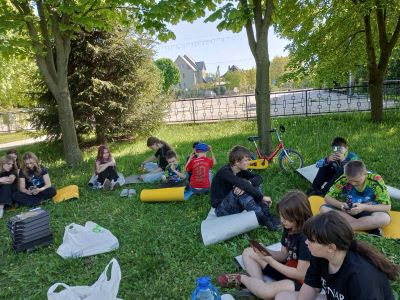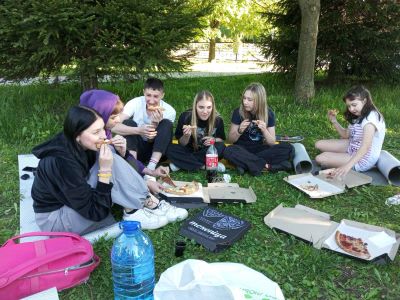烏克蘭人第一次玩一二三木頭人!
在烏克蘭的孤兒院,許多孩子不是患有重病就是被父母拋棄,有些則是因為無力負擔生活費而被送進孤兒院。由於東正教的復活節即將到來,部分孩子需要返回家中與家人團聚。在這之前,他們特地到附近的公園活動。一些來自台灣的志工特別和他們一起玩起了Netflex影集《章魚遊戲》中的123木頭人。實際上,這種活動在日本或台灣都很普遍。這是許多外國人都沒有玩過的遊戲,早期在亞洲非常流行。以下是相關遊戲的玩法:
紅綠燈是一種兒童的肢體遊戲,靈感來自於交通號誌中的紅綠燈。這個遊戲通常分為兩大類型,讓孩子們在玩樂中鍛鍊身體協調能力和社交技能。
第一類型,有時也被稱為「一二三木頭人」,遊戲的目的是在紅燈時停止移動,在綠燈時則可以自由行動。通常,一個孩子被指定為「交通警察」,負責喊出指示,例如「紅燈」或「綠燈」。其他孩子必須在聽到指令後停止或行動。如果有人在紅燈時移動,則可能被視為違規,並受到懲罰,例如退回起點或退出遊戲。
第二類型類似於鬼抓人的遊戲,但加入紅綠燈的元素。在這個遊戲中,一個孩子被指定為「鬼」,其他孩子則是「逃跑的人」。當鬼靠近時,交通警察喊出「紅燈」,所有逃跑的人必須停止移動。當鬼離開時,交通警察喊出「綠燈」,逃跑的人可以繼續逃跑。遊戲的目標是在被鬼抓到之前,逃跑的人要盡可能多地移動。
這兩種遊戲都是通過模仿交通號誌中紅綠燈的運作方式,讓孩子們在遊戲中學習遵守規則、控制自己的行為,同時也培養他們的社交技能和團隊合作精神。
Recently, Taiwanese volunteers in Ukraine taught children how to play "one, two, three, stoplight" from the squid game, a game that many foreigners haven't played before, but was popular in Asia earlier. Here's how the game is played:
Stoplight is a children's physical activity game inspired by traffic lights. It is typically divided into two main types, allowing children to develop body coordination and social skills while having fun.
In the first type, sometimes referred to as "one, two, three stoplight," the goal of the game is to stop moving when the light is red and to move freely when the light is green. Usually, one child is designated as the "traffic cop" and is responsible for calling out commands like "red light" or "green light." Other children must stop or move upon hearing the commands. Moving during a red light may result in penalties such as going back to the starting point or being eliminated from the game.
The second type is similar to the game of tag but incorporates the elements of the stoplight. In this game, one child is chosen as the "ghost," while the others are "runners." When the ghost approaches, the traffic cop shouts "red light," and all runners must stop moving. When the ghost moves away, the traffic cop shouts "green light," and the runners can resume fleeing. The goal of the game is for the runners to move as much as possible before being caught by the ghost.
Both games simulate the operation of traffic lights, teaching children to follow rules, control their behavior, and develop social skills and teamwork spirit through play.


- 1
- 2
- 3
- 4
